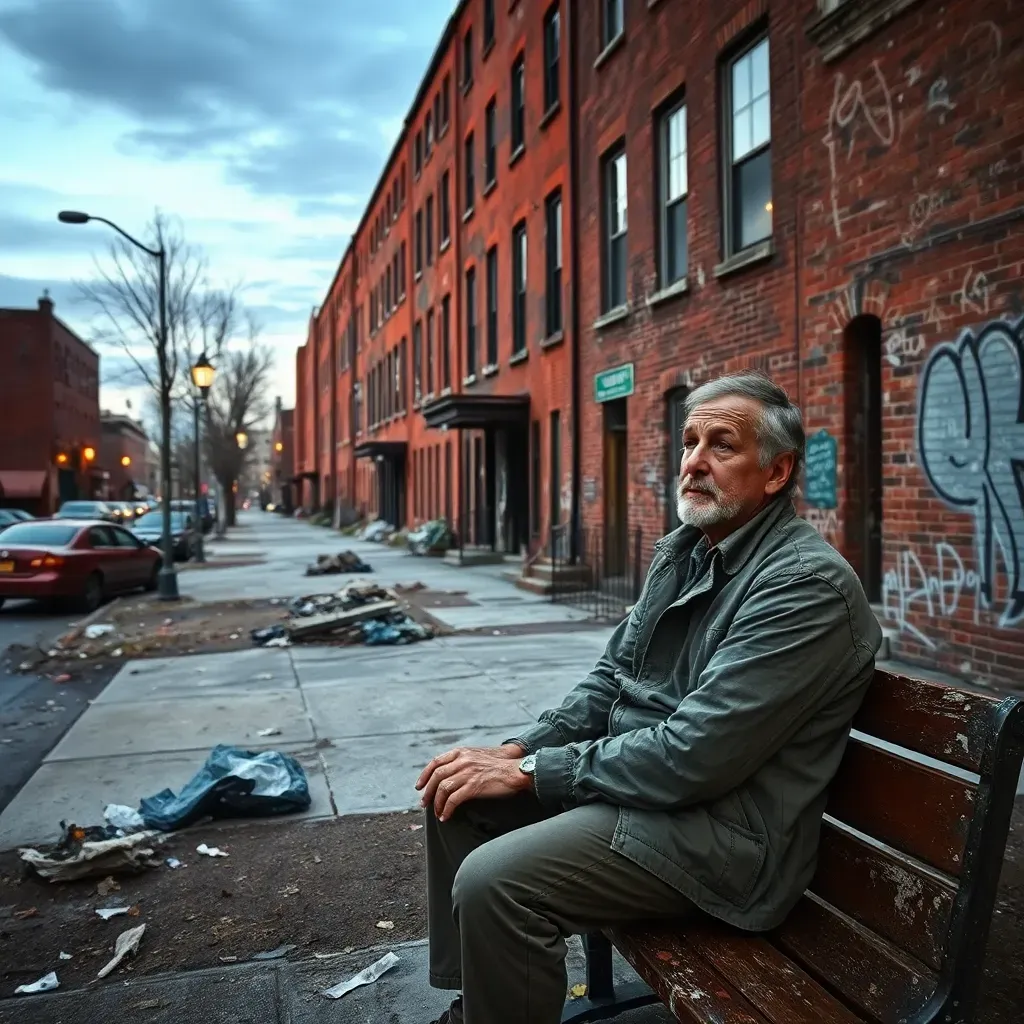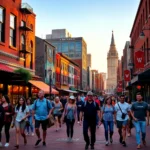Is Baltimore worst places to live? Shocking truths you won’t believe
- Why Baltimore’s Reputation Has Everyone Talking
- Baltimore’s Crime History: From Deadliest City to Signs of Change
- Breaking Down Baltimore’s Crime Stats: What The Numbers Really Say
- Neighborhoods in Baltimore: The Good, The Bad, and The Sketchy
- What Locals and Experts Say: Real Talk on Baltimore’s Safety and Challenges
- Nighttime in Baltimore: When and Where to Be Extra Careful
- Living in Baltimore Today: Is It Really One of the Worst Places to Live?
- Comparing Baltimore to Other Risky Towns in the US: How Does It Stack Up?
- Crime Maps and Visual Guides: Seeing Baltimore’s Safety Zones at a Glance
- What’s Being Done? Baltimore’s Fight Against Crime and Urban Decay
- Tips for Staying Safe in Baltimore: Practical Advice for Residents and Visitors
- What Makes Baltimore One of the Worst Places to Live — And What Might Change That
- Opinions Section: What Real People Are Saying About Living in Baltimore
- References and Further Reading
Why Baltimore’s Reputation Has Everyone Talking
Baltimore’s name often pops up when folks talk about the most dangerous cities in the US. It’s got this tough rep for being one of the sketchy and rough places to live, full of crime and urban challenges. But is it really that bad nowadays? That’s what a lot of people want to know — whether they’re thinking about moving, visiting, or just curious about the truth behind the headlines.
People want straightforward info, no fluff, about Baltimore’s crime rates, which neighborhoods are safer, and what life is like on the streets. This article digs deep into the numbers, shares what locals and experts say, and compares Baltimore to other dodgy cities in America. We’ll also cover safety tips and what’s being done to improve the city. So stick around if you want the real deal on whether Baltimore is truly one of the worst places to live or just misunderstood.
Baltimore’s Crime History: From Deadliest City to Signs of Change
Back in 2015, Baltimore was known as one of the deadliest big cities in the US. The homicide rate was sky-high, making national headlines. Violent crime was rampant, fueled by deep-rooted issues like urban decay, poverty, and gang activity. Many neighborhoods were considered crime-ridden and unsafe, painting a grim picture for residents and visitors alike.
Fast forward to 2024, and things have shifted somewhat. Official reports show a 36% drop in homicides and a 30% decline in shootings compared to those rough years. That’s a big improvement, but Baltimore’s crime rates still hover above the national average. The city’s history of rough neighborhoods and economic struggles still influences how people see it today.
Understanding this history helps explain why Baltimore keeps its tough reputation, even as some parts of the city work hard to turn things around.
Breaking Down Baltimore’s Crime Stats: What The Numbers Really Say
When you look at Baltimore’s crime stats, it’s important to break them down by category. Violent crimes like assaults and homicides grab headlines, but property crimes such as burglary and car theft are also common. Drug-related incidents add another layer to the city’s challenges.
The latest FBI and Baltimore Police Department reports give us a clearer picture. For example, car thefts remain a big problem, with rates well above the national average. Violent crimes have decreased but still happen more often than in many other cities. The city’s overall crime index reflects these mixed trends.
However, numbers alone don’t tell the whole story. Some neighborhoods have much higher crime rates than others, so context matters. A high citywide crime rate doesn’t mean every street is sketchy or unsafe. That’s why understanding where crimes happen is just as important as the raw stats.

Neighborhoods in Baltimore: The Good, The Bad, and The Sketchy
What makes a neighborhood rough or crime-ridden in Baltimore? It’s usually a mix of high crime rates, poverty, and urban decay. Areas like Middle East, West Baltimore, Cherry Hill, and Fairfield often top the lists for bad areas in the city. These neighborhoods face challenges like gang activity, drug trafficking, and limited police presence.
On the flip side, neighborhoods such as Roland Park, Towson, and Federal Hill are known for being safer and more family-friendly. They have lower crime rates and more community resources, making them popular spots for residents who want to avoid the dodgy parts of town.
Here’s a quick table comparing some key neighborhoods:
| Neighborhood | Crime Rate (per 1,000 residents) | Safety Tips | Living Conditions |
|---|---|---|---|
| Middle East | High (400%+ above state avg) | Avoid after dark, stay in well-lit areas | Urban decay, poverty, gang presence |
| West Baltimore | High | Use caution, community watch active | Mixed residential, some revitalization |
| Roland Park | Low | Generally safe, stay alert at night | Affluent, well-maintained |
| Towson | Low | Safe, family-friendly | Good schools, amenities |
These differences show how Baltimore’s neighborhoods vary widely in safety and living conditions. Urban decay and socioeconomic factors play a big role in shaping these areas.
What Locals and Experts Say: Real Talk on Baltimore’s Safety and Challenges
Hearing from people who live and work in Baltimore adds valuable perspective. Residents often share their experiences on forums like Reddit and Twitter, where opinions range from “it’s a whack place at times” to “there’s a strong community trying to make things better.”
Police officers and community leaders point to poverty, drug problems, and stretched resources as key challenges. Some mention that police response times can be slow in certain sketchy areas, which affects safety perceptions.
Community programs focused on youth and neighborhood revitalization get praise for helping reduce crime and build trust. Locals advise visitors and newcomers to stay aware, avoid isolated spots at night, and connect with neighbors.
“Baltimore has its rough spots, but there’s also a lot of heart and effort to improve. You just gotta know where to go and when.”
“Poverty and drugs fuel much of the crime, but community policing and tech are helping us turn the corner.”
Nighttime in Baltimore: When and Where to Be Extra Careful
Some parts of Baltimore become noticeably shady after dark. Areas with poor street lighting and limited police patrols can feel unsafe, especially for visitors unfamiliar with the city.
Public transportation can be hit or miss at night, so it’s smart to plan ahead. Locals recommend sticking to well-lit streets, avoiding isolated blocks, and traveling in groups when possible. Neighborhoods like Middle East and parts of West Baltimore are best avoided after sunset.
Stories of incidents after dark often involve car break-ins or robberies in dodgy spots. Staying alert and following local advice helps reduce risks.
Living in Baltimore Today: Is It Really One of the Worst Places to Live?
Despite its crime-ridden reputation, Baltimore offers some real positives. The city’s cost of living is lower than many bigger cities, making it attractive for folks on a budget. There’s a growing tech scene and a vibrant arts and culture vibe that many residents love.
Youth crime rates have dropped, thanks in part to community programs and better opportunities. Still, challenges like uneven education quality and pockets of poverty remain.
Many people who live in Baltimore appreciate its unique character and sense of community, even if they stay cautious about safety.
Comparing Baltimore to Other Risky Towns in the US: How Does It Stack Up?
Baltimore isn’t alone when it comes to being a rough or crime-ridden city. Places like Detroit, St. Louis, Oakland, and Memphis also face similar challenges. Here’s a quick comparison:
| City | Violent Crime Rate (per 1,000) | Property Crime Rate (per 1,000) | Safety Index (0-100) | Economic Growth |
|---|---|---|---|---|
| Baltimore | High (above national avg) | High (car thefts notable) | Low (below 30) | Moderate, tech jobs growing |
| Detroit | Very High | High | Low | Slow recovery |
| St. Louis | Very High | Moderate | Low | Mixed |
| Oakland | High | High | Low | Growing tech sector |
Baltimore’s mix of tough neighborhoods and ongoing economic efforts makes it unique. It’s not the worst, but it’s definitely among the risky towns in the US that require caution and awareness.
Crime Maps and Visual Guides: Seeing Baltimore’s Safety Zones at a Glance
Crime heat maps are a handy way to visualize where Baltimore’s unsafe spots are versus safer zones. These maps use colors to show high-crime areas, often highlighting neighborhoods like Middle East and West Baltimore in red.
Understanding these maps helps residents and visitors plan their routes and avoid dodgy areas. Interactive maps online let you zoom in and see detailed crime reports by street.
These visuals back up what locals say about the city’s rough and safe neighborhoods, making it easier to navigate Baltimore’s complex urban environment.
What’s Being Done? Baltimore’s Fight Against Crime and Urban Decay
Baltimore Police Department has launched several initiatives aimed at reducing crime and improving community relations. Neighborhood watch programs, youth outreach, and public safety campaigns are part of the effort.
Technology plays a role too, with live remote video monitoring helping businesses and neighborhoods keep an eye on sketchy activity. However, police still face challenges like limited resources and slow response times in some areas.
Urban renewal projects aim to tackle urban decay by renovating housing and improving public spaces. While progress is slow, these efforts show promise in making Baltimore a safer, more livable city.
Baltimore Crime & Neighborhood Safety Overview 2024
Crime Reduction Since 2015
Neighborhood Crime Rates (per 1,000 residents)
Crime & Safety Comparison: Baltimore vs Other Risky US Cities
| City | Violent Crime Rate | Property Crime Rate | Safety Index (0-100) | Economic Growth |
|---|---|---|---|---|
| Baltimore | High (above national avg) | High (car thefts notable) | Low (<30) | Moderate, tech jobs growing |
| Detroit | Very High | High | Low | Slow recovery |
| St. Louis | Very High | Moderate | Low | Mixed |
| Oakland | High | High | Low | Growing tech sector |
Tips for Staying Safe in Baltimore: Practical Advice for Residents and Visitors
Staying safe in Baltimore means being smart and aware. Here are some practical tips:
- Avoid poorly lit streets and isolated areas, especially at night.
- Use public transportation cautiously; consider rideshares after dark.
- Stay informed about local crime reports and community alerts.
- Join or support neighborhood watch groups.
- Use technology like security cameras and apps to monitor surroundings.
- Report suspicious activity promptly to authorities.
Businesses and residents can also invest in security measures like live video monitoring to deter messed-up incidents.
What Makes Baltimore One of the Worst Places to Live — And What Might Change That
- Baltimore has a history of high crime rates, especially violent crime and car thefts.
- Neighborhood safety varies widely; some areas are rough and crime-ridden, while others are relatively safe.
- Local opinions reflect both frustration and hope, with community efforts making a difference.
- Nighttime safety requires extra caution in certain zones.
- The city’s growing tech sector and affordable living offer positives amid challenges.
- Compared to other sketchy cities in America, Baltimore shares common struggles but also unique strengths.
- Ongoing police initiatives and urban renewal projects aim to improve safety and quality of life.
Baltimore’s reputation as one of the worst places to live is rooted in real challenges but doesn’t tell the whole story. With awareness and community action, the city is slowly changing for the better.
Opinions Section: What Real People Are Saying About Living in Baltimore
“Living here means knowing your neighborhood and watching your back, but there’s a lot of love for this city too.”
“The crime-ridden spots are real, but community programs give hope. It’s not all bad.”
“Police do their best, but resources are stretched thin. Residents have to look out for each other.”
References and Further Reading
- Most Dangerous Neighborhoods in Baltimore
- Reddit: Honest Thoughts on Living in Baltimore
- Most Dangerous Places in the US
- Is Baltimore Dangerous? Crime and Safety in 2024
- Top Ten Most Dangerous Cities in the US
- Safest Places in Baltimore
- Worst Places to Live in the US
- Living in Baltimore, MD
- Baltimore Ranks Among Worst Cities to Drive
What do you think about Baltimore’s reputation? Have you lived or visited there? How do you feel about the safety and community? Would you consider moving to Baltimore or avoiding it? Share your thoughts, questions, or experiences in the comments below!
 Is Baltimore family safety at risk? Shocking truths revealed
Is Baltimore family safety at risk? Shocking truths revealed Is Baltimore safe to visit? Shocking truths every traveler must know
Is Baltimore safe to visit? Shocking truths every traveler must know Is Detroit worst places to live? The shocking truth revealed
Is Detroit worst places to live? The shocking truth revealedSi quieres conocer otros artículos parecidos a Is Baltimore worst places to live? Shocking truths you won’t believe puedes visitar la categoría Baltimore.

Leave a Reply